Peter von Cornelius (1784-1867)
We Perform Peter von Cornelius art authentication. Peter von Cornelius appraisal. Peter von Cornelius certificates of authenticity (COA). Peter von Cornelius analysis, research, scientific tests, full art authentications. We will help you sell your Peter von Cornelius or we will sell it for you.
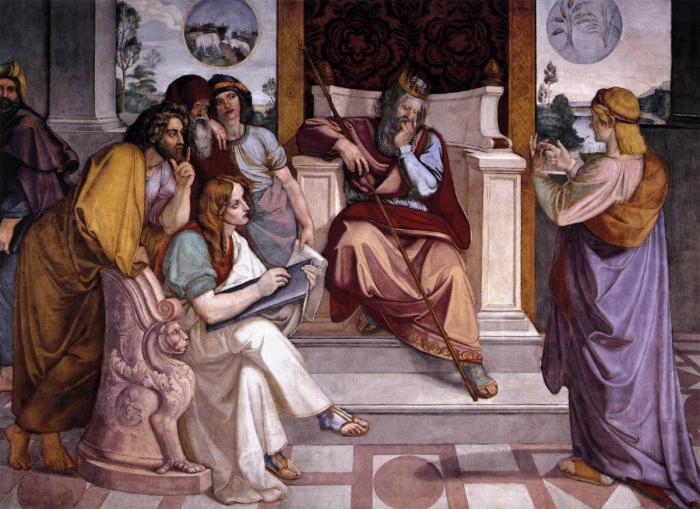
Peter von Cornelius was a German painter born in Düsseldorf. His father, who was inspector of the Düsseldorf gallery, died in 1799, and the young Cornelius was stimulated to extraordinary exertions. In a letter to the Count Raczynski he says, “It fell to the lot of an elder brother and myself to watch over the interests of a numerous family. It was at this time that it was attempted to persuade my mother that it would be better for me to devote myself to the trade of a goldsmith than to continue to pursue painting–in the first place, in consequence of the time necessary to qualify me for the art, and in the next, because there were already so many painters. My dear mother, however, rejected all this advice, and I felt myself impelled onward by an uncontrollable enthusiasm, to which the confidence of my mother gave new strength, which was supported by the continual fear that I should be removed from the study of that art I loved so much.”
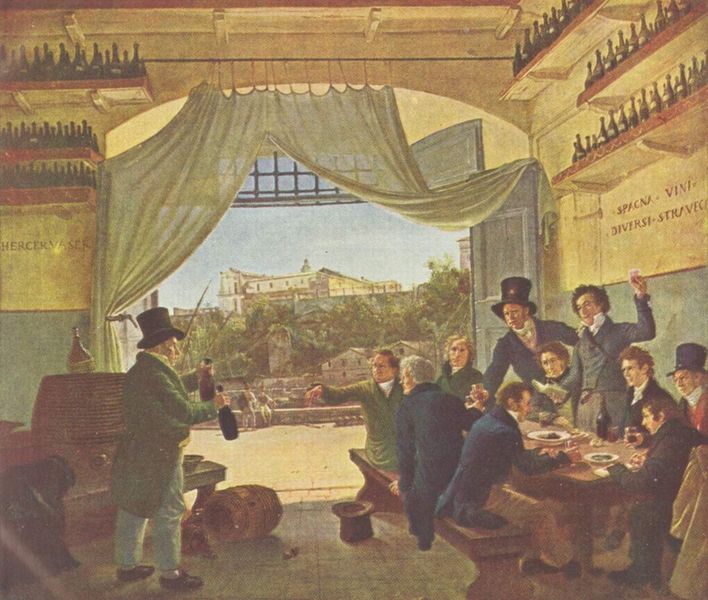
His earliest work of importance was the decoration of the choir of the church of St Quirinus at Neuss. At the age of twenty-six he produced his designs from Faust. On October 14, 1811, he arrived in Rome, where he soon became one of the most promising of that brotherhood of young German painters which included Overbeck, Schadow, Veit, Schnorr and Ludwig Vogel (1788-1879), a fraternity (some of whom selected a ruinous convent for their home) who were banded together for resolute study and mutual criticism. Out of this association came the men who, though they were ridiculed at the time, were destined to found a new German school of art, the Nazarene movement.
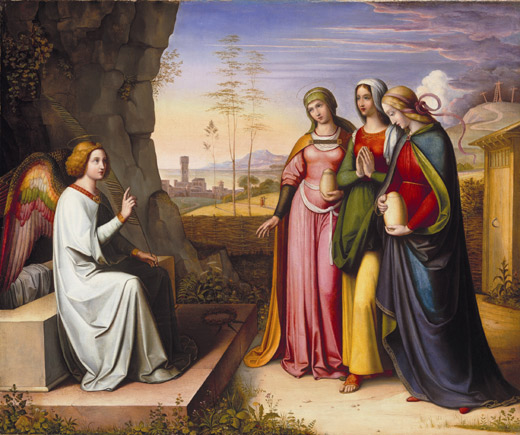
At Rome Cornelius participated, with other members of his fraternity, in the decoration of the Casa Bartoldi and the Villa Massimi, and where thus employed he was also engaged upon designs for the illustration of the Nibelungenlied. From Rome he was called to Düsseldorf to remodel the Academy, and to Munich by the then crown-prince of Bavaria, afterwards Louis I, to direct the decorations for the Glyptothek. Cornelius, however, soon found that attention to such widely separated duties was incompatible with the just performance of either, and most inconvenient to himself; eventually, therefore, he resigned his post at Düsseldorf to throw himself completely and thoroughly into those works for which he had been commissioned by the crown-prince. He therefore left Düsseldorf for Munich, where he was joined by those of his pupils who elected to follow and to assist him. At the death of Director Langer, 1824-1825, he became director of the Munich Academy.
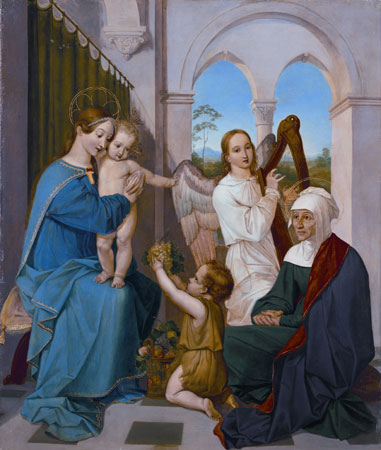
The fresco decorations of the Ludwigskirche, which were for the most part designed and executed by Cornelius, are perhaps the most important mural works of modern times. The large fresco of the Last Judgment, over the high altar in that church, measures 62 ft. in height by 38 ft. in width. The frescoes of the Creator, the Nativity, and the Crucifixion in the same building are also upon a large scale. Amongst his other great works in Munich may be included his decorations in the Pinakothek and in the Glyptothek; those in the latter building, in the hall of the gods and the hail of the hero-myths, are perhaps the best known. About the year 1839-1840 he left Munich for Berlin to proceed with that series of cartoons, from the Apocalypse, for the frescoes for which he had been commissioned by Frederick William IV, and which were intended to decorate the Campo Santo or royal mausoleum. These were his final works.
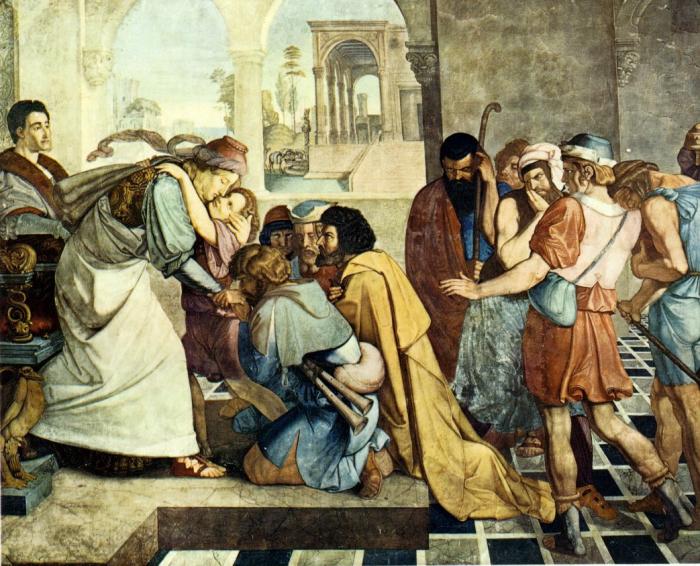
Cornelius, as an oil painter, possessed but little technical skill, nor do his works exhibit any instinctive appreciation of color. Even as a fresco painter his manipulative power was not great. And in critically examining the execution in color of some of his magnificent designs, one cannot help feeling that he was, in this respect, unable to do them full justice. Cornelius and his associates endeavored to follow in their works the spirit of the Italian painters. But the Italian strain is to a considerable extent modified by the Dürer heritage. This Dürer influence is manifest in a tendency to overcrowding in composition, in a degree of attenuation in the proportions of, and a poverty of contour in, the nude figure, and also in a leaning to the selection of Gothic forms for draperies. These peculiarities are even noticeable in Cornelius’s principal work of the “Last Judgment,” in the Ludwigskirche in Munich.
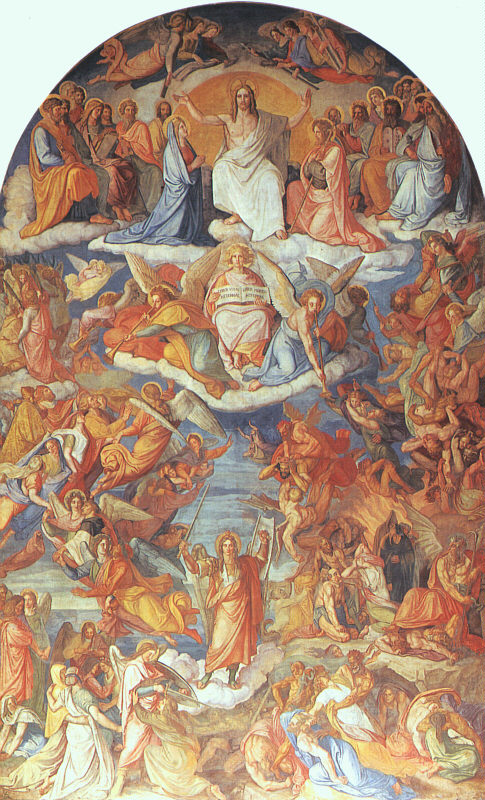
The attenuation and want of flexibility of contour in the nude are perhaps most conspicuous in his frescoes of classical subjects in the Glyptothek, especially in that representing the contention for the body of Patroclus. But notwithstanding these peculiarities there is always in his works a grandeur and nobleness of conception, as all must acknowledge who have inspected his designs for the Ludwigskirche, for the Campo Santo, etc. If he were not dexterous in the handling of the brush, he could conceive and design a subject with masterly purpose. If he had an imperfect eye for color, in the Venetian, the Flemish, or the English sense, he had vast mental foresight in directing the German school of painting; and his favorite motto of “Deutschland uber alles” indicates the direction and the strength of his patriotism. Karl Hermann was one of Cornelius’s earliest and most esteemed scholars, a man of simple and fervent nature, painstaking to the utmost, a very type of the finest German student nature; Kaulbach and Adam Eberle were also amongst his scholars. Every public edifice in Munich and other German cities which were embellished with frescoes, became, as in Italy, a school of art of the very best kind; for the decoration of a public building begets a practical knowledge of design. The development of this institution of scholarship in Munich was a work of time. The cartoons for the Glyptothek were all by Cornelius’s own hand. In the Pinakothek his sketches and small drawings sufficed; but in the Ludwigskirche the invention even. of some of the subjects was entrusted to his scholar Hermann.
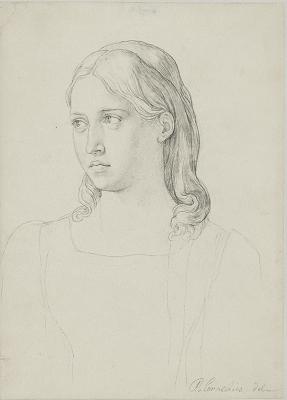
To comprehend and appreciate thoroughly the magnitude of the work which Cornelius accomplished for Germany, we must remember that at the beginning of the 19th century Germany had no national school of art. Germany was in painting and sculpture behind all the rest of Europe. Yet in less than half a century Cornelius founded a great school, revived mural painting, and turned the gaze of the art world towards Munich. The German revival of mural painting had its effect upon England, as well as upon other European nations, and led to the famous cartoon competitions held in Westminster Hall, and ultimately to the partial decoration of the Houses of Parliament. When the latter work was in contemplation, Cornelius, in response to invitations, visited England (November 1841).
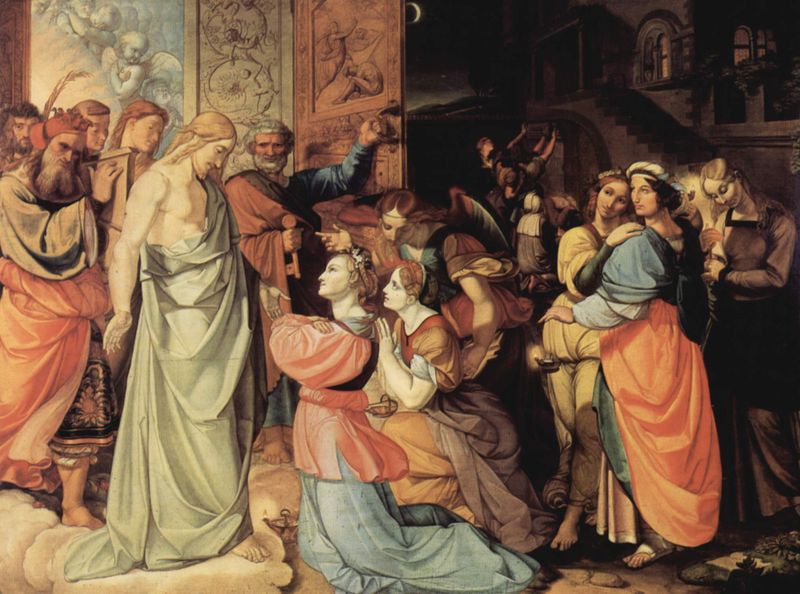
His opinion was in every way favorable to the carrying out of the project, and even in respect of the durability of fresco in the climate of England. Cornelius, in his teaching, always inculcated a close and rigorous study of nature, but he understood by the study of nature something more titan what is ordinarily implied by that expression, something more than constantly making studies from life; he meant the study of nature with an inquiring and scientific spirit. Study nature, was the advice he once gave, in order that you may become acquainted with its essential forms.
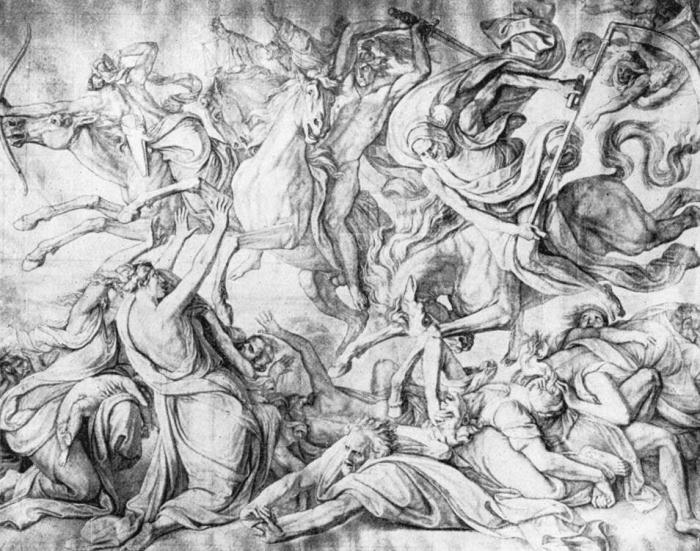
The personal appearance of Cornelius could not but convey to those who were fortunate enough to come into contact with him the impression that he was a man of an energetic, firm and resolute nature. He was below the middle height and squarely built. There was evidence of power about his broad and overhanging brow, in his eagle eyes and firmly gripped attenuated lips, which no one with the least discernment could misinterpret. Yet there was a sense of humor and a geniality which drew men towards him; and towards those young artists who sought his teaching and his criticism he always exhibited a calm patience. Still wondering about a 19th century German painting in your family collection? Contact us…it could be by Peter von Cornelius.
Reviews
1,217 global ratings
5 Star
4 Star
3 Star
2 Star
1 Star
Your evaluation is very important to us. Thank you.
